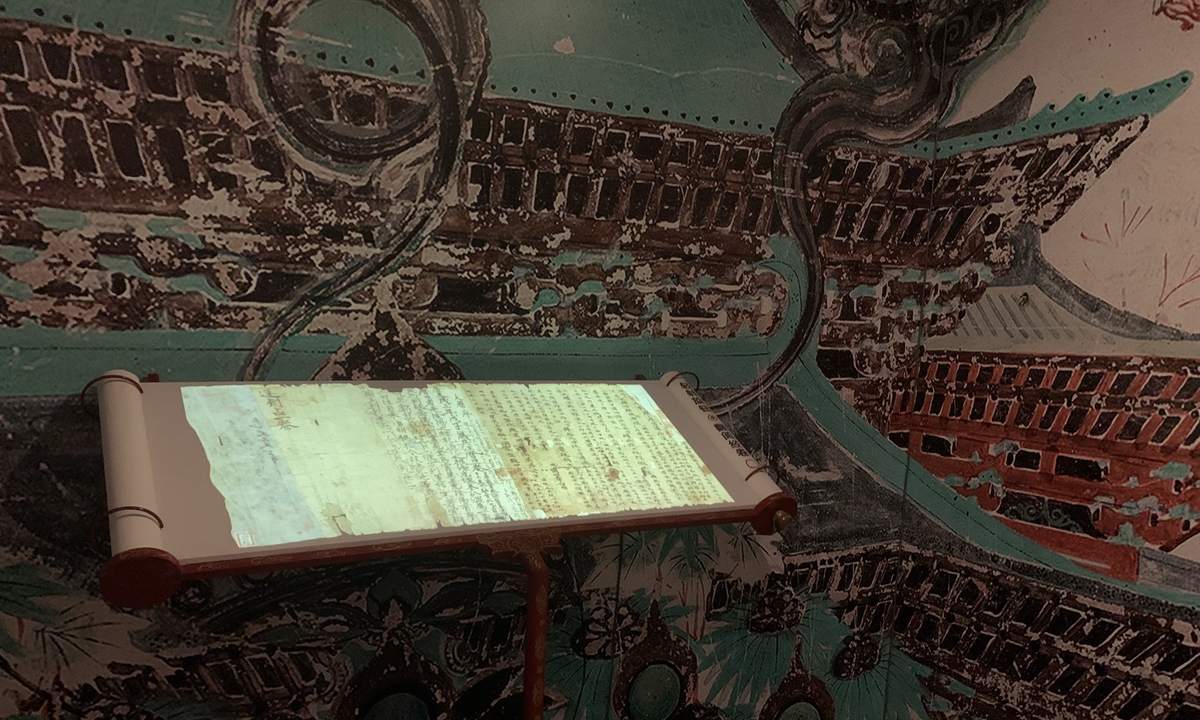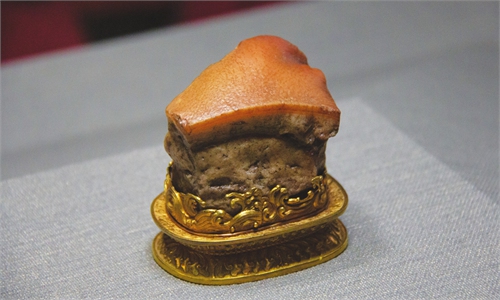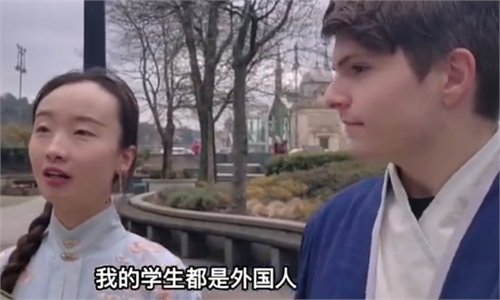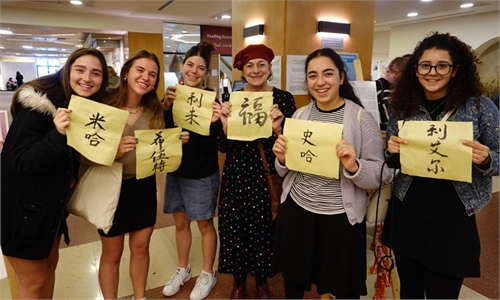ARTS / CULTURE & LEISURE
Great discoveries on display
Exhibition explores earliest form of Chinese writing

An ancient book of Dunhuang Literature found in the Mogao Grottoes in Dunhuang, Northwest China's Gansu Province. Photo: Courtesy of the National Library of China
As the Year of the Rabbit is just around the corner, the ancient way of writing the Chinese character tu (rabbit) has piqued the public's interest.
To satisfy people's curiosity, the exhibition China's Four Great Discoveries in the 20th Century kicked off on Saturday at the National Museum of Classic Books in Beijing. As the name indicates, it covers four major discoveries - oracle bones, the Juyan Bamboo Slips, Dunhuang Literature and the Archives of the Ming and Qing Dynasties - that helped give brand-new insight into the evolution of Chinese writing and literature.
Originally housed in the National Library of China and other local libraries and research institutions, the four discoveries are being shown together for the first time. More than 382 ancient books and records are on display in addition to multimedia presentations.
Oracle bone inscriptions, the earliest Chinese writing discovered to date, are a key highlight of the exhibition. Across four sections, the exhibition delves into the discovery of the oracle bones at the end of the Qing Dynasty (1644-1911) and the establishment of oracle bone research, the rules by which characters were created, how they were used in divination ceremonies and the content of the inscriptions themselves, which covered the worship of Heaven, astronomy, farming, herding and hunting as well as the traditional Chinese medicine (TCM) practices.
Among the 54 oracle bones on display at the exhibition, one highlight is an inscription that records the day one Shang Dynasty (c.1600BC-1046BC) king went rabbit hunting. The oracle bone character for rabbit is a pictograph that clearly depicts the animal's front and hind legs as well as a little short tail. Meanwhile, the largest oracle bone on display boasts a 218-character inscription that records worship of King Yin Xiangong and the God of the Mountain.
Song Guoding, an experienced Shang Dynasty archaeology expert, told the Global Times that oracle bones are the "origin of Chinese characters."
As ancient logograms, Chinese characters have a "comprehensive" structuring system behind their creation. This paved a "literal" path for people to decode China's rich cultural civilization and to study ancient Chinese society through texts recorded on oracle bones.
"Though there were ancient characters that preceded them, they are still the most valuable due to the system's incredible maturity. Also, oracle bones were used by ancient Chinese of higher social class so the inscriptions often say a lot about the social conditions of the times."
The organizer said that the physical display of oracle bones, archaeological excavation pic-tures and collections of related research results demonstrates China's ancient civilization. Oracle bone inscriptions play a significant role in the history of Chinese civilization as well as the development of human civilization. As the source of Chinese characters and the root of traditional Chinese culture, oracle bone inscriptions are of great value for strengthening cultural self-confidence and enhancing national cohesion.
The Juya Bamboo Slips reveal how people in the Han Dynasty (206BC-AD220) garrisoned the frontier areas and fought against invading nomadic tribes, while Dunhuang Literature pro-vides insight into the society, economy, culture, art, religion and TCM practices in China from the 4th to the 6th century. Dubbed an "encyclopedia of ancient China," Dunhuang Literature, found in the Mogao Grottoes at Dunhuang in Northwest China's Gansu Province in 1900, also gives insight into the international exchanges between China and other countries at the time.
In particular, it includes the Mahayana Buddhist scripture introduced from India, advocating the idea of protecting the country and its people, which has been valued by generations of ancient rulers.
The Archives of the Ming and Qing Dynasties shows the multi-faceted records of social development during China's last two dynasties. The largest and most complete archives of dynasties in Chinese history, they consist of 123 works highlighted by exhibits such as the only completely preserved box for storing the name of the Qing Emperor Daoguang's successor.
Additionally, to allow audiences to better experience ancient Chinese culture, some new technological methods are being used in the exhibition such as interactive technology and simulations to recover scenes from the past and give audiences a fantastic visual experience that can help them learn Chinese history and culture in a fresh and understandable way.
The organizer told the Global Times on Sunday that the exhibition sheds light on the inter-pretation of historical materials from different periods and highlights the significant roles of ancient books, archives and cultural relics in the inheritance of civilization. It aims to make the text written in ancient books come alive with the support of digital technology like VR to better promote China's ancient civilization and culture.




